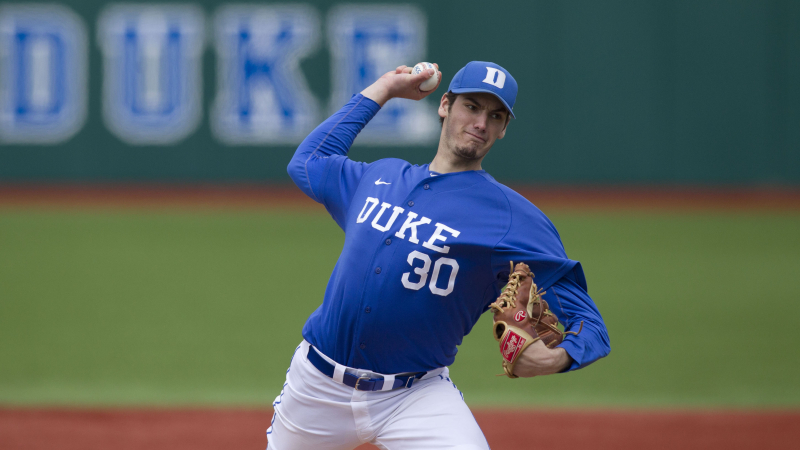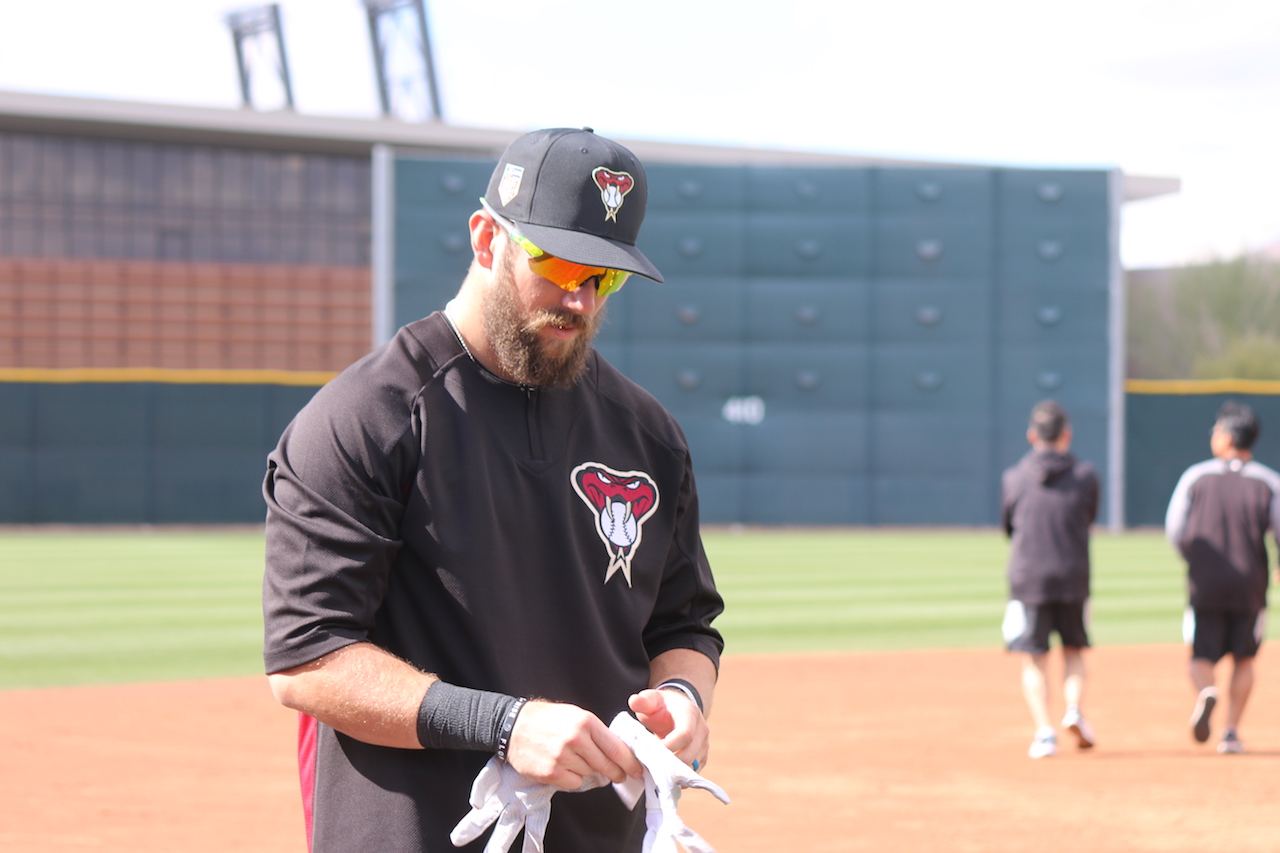It got WAY messier than it needed to be, but we have baseball in 2020.
Major League Baseball and the Players Union have agreed to terms on a 60-game season that is continuing to take shape. We know teams will have about three weeks to get ready, there will be a universal designated hitter, 40 of the 60 games will be against the division and off days will be at a premium.
Fewer games with the same amount of playoff spots means each contest will be nearly three times as important as a game played any other year. A fast start could set up the Diamondbacks for success and a slow one could be detrimental to a team Mike Hazen has meticulously put together.
Teams will not have the time they are usually afforded if they struggle in April and May.
Don’t believe me?
Let me remind you that the Washington Nationals – ya know, the 2019 World Series champs – would not have even sniffed the postseason last year at the 60-game mark as they were seven games below .500.
So does this new setup suit the Snakes for better or worse?
We’ll have to see.
But we can dive into the numbers from past seasons to give some sort of indication of their chances to make a playoff run.
First, let’s look at how the Diamondbacks have fared in the first 60 games of each year in the Torey Lovullo era:
2017:
35-25
The Snakes were one of the early surprises to kick off Lovullo’s first season in Arizona and were firmly in the playoff picture at that point in the year. The difference? The D-backs still had 100 games to go. They’d be ready for the postseason in 2020.
At this point in the season, the Diamondbacks had the third-best record in the National League, but oddly enough, they were second in the NL West behind the Rockies. Arizona finished second in the division at 93-69 with a Wild Card berth, while the Rockies finished 87-75.
2018
32-28
In early June of this season, the D-backs had already endured a season-ending injury to Taijuan Walker and Clay Buchholz was just a few starts into a solid year with Arizona. Zack Greinke had a rough April but seemed to steady his game in May and came away with a 3.66 ERA. The team hung tough throughout the year but ultimately could not make the postseason.
2019
30-30
The Diamondbacks had their slowest start of the Lovullo era. Maybe it was playing without the usual staples of Paul Goldschmidt and A.J. Pollock. Maybe it was seeing the likes of the Dodgers, Rays, Yankees and Braves – all playoff teams – frequently in the first two months. Regardless, it was a slower start but the team rallied to be in playoff contention until the bitter end.
The only problem in this year’s scenario is there’s little room to put things together.
Now, the plan is for the Diamondbacks to play the National League West for 40 of those 60 games. From 2017-19, here is how the records have shaken out through the first 60 games in each season:
2019
LAD 41-19
COL 31-27
SD 30-29
AZ 30-30
SF 24-34
2018
AZ 32-28
COL 31-29
LAD 30-30
SF 30-31
SD 28-35
2017
COL 37-23
ARI 35-25
LAD 35-25
SF 24-36
SD 23-36
In total, here is how the division shakes out when combining the last three years:
Los Angeles: 106-74
Colorado: 99-79
Arizona: 97-83
San Diego: 81-100
San Francisco: 78-101
So now that we’ve seen that the Diamondbacks have generally been in contention 60 games in, which players could benefit from this format? Which players could be hurt in a shorter season? Who should we be keeping our eye on?
Jake Lamb
During Cactus League 2020 – which feels like it was roughly 40 years ago – there was a lot of discussion about the role Lamb could find in this year’s infield. Ketel Marte, at least at the time, was presumed to be the everyday second baseman. That meant Eduardo Escobar would see the bulk of his time at third base, a spot Lamb had presided over in previous years. A fully healthy Lamb could have seen some time at first base, but Christian Walker showed he could be a mainstay in the infield and Kevin Cron has been pushing for extended Major League time.
A universal designated hitter means Lamb could find a more regular spot in the lineup than if the season played out as planned. He could face right-handed pitchers and piece together some decent playing time between first and DH.
The other factor to take into account is Lamb historically has been a much better first-half hitter than in games 100-162. The infielder slashes .274/.357/.503 in the first half of the season throughout his career. After the All-Star break, he slashes .213/.305/.375. It’s hard to pinpoint the exact reason for that dip, but a shorter season could relieve that.
Luke Weaver
“Dream Weaver” had such a promising debut in 2019, but elbow tightness cut him short to just 12 starts. The young starter is an important staple of the club’s success over the coming years and has only surpassed 100 innings once in his short career. While teams have focused more and more on limiting innings where they can for up-and-coming pitchers, having 10-15 regular season starts for Weaver would align with what he’s done for the bulk of his young career.
David Peralta
Looking at Peralta’s splits, it’s pretty dead even between his production in the first and second half.
In his career, he’s logged a .288 batting average with 48 home runs and 194 RBI in the first half of the season. In the second half, he hits .293 with 37 home runs and 136 RBI. The slight dip in the power production makes sense because of the number of games he plays.
A shorter season may not benefit his production when he’s on the field, but it’s more that he could be ON the field more consistently. Over the past three seasons, Peralta has played in 238 games in the first half of the season. In the second half, he tallies 147 games, playing over 60 games after the All-Star break in just one season in that span.
Ketel Marte
2019 was a partay for Marte (I won’t apologize for that). But looking at his 2018 and 2019, the two years he had an expanded role with the club, he was noticeably better in the second half in each year. In each season, he hit nearly 50 points better in the second half and his total strikeouts are noticeably smaller.
On one side of the coin, it’s promising to see Marte get better as the season progresses. On the other, it could be concerning that the team may not get their best position player at his best in a condensed season.
The X-Factor
Torey Lovullo has proven he’s one of the best minds in baseball. The 2016 Diamondbacks team was one of the most disappointing and underachieving groups in Arizona sports in the past 20 years. The 2017 team – Lovullo’s first year as manager – could have followed suit with essentially the same roster.
But they won. And won a lot.
A big part of that was Lovullo and his message of love and community within the clubhouse. He has developed and been very open about how he examines what he does as a leader. He rarely rushes a decision and often times attacks scenarios from all angles. He isn’t afraid to be patient with roster and strategy decisions.
Most seasons cater well to that.
This season won’t.
That’s not to say Lovullo can’t thrive in a mad-dash season. It’s just that he hasn’t had to do that as frequently as he will be forced to this year.
Lovullo appreciates growth within his roster and himself. There should be a lot of that in this dead sprint.
There will be less baseball in 2020 than other years, but it will be one of the most memorable seasons once the Diamondbacks take the field in this new landscape.
Let’s get weird.
Related posts:
Jordan Hamm
Mixing his passions for sports and storytelling, Jordan comes to Sports360az as a multimedia reporter/producer looking to share the best stories Arizona has to offer. You can follow him on Twitter and Instagram @JordyHamm



